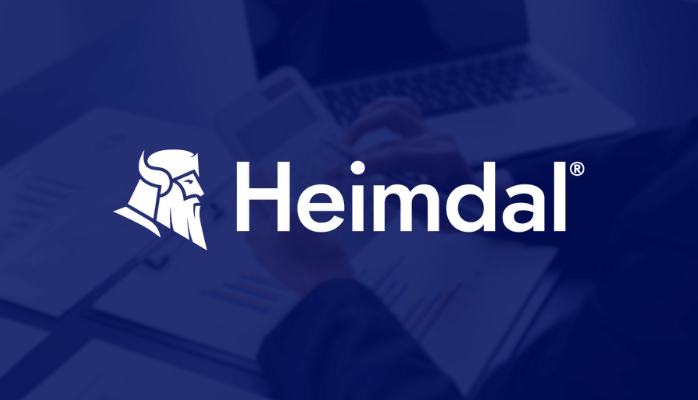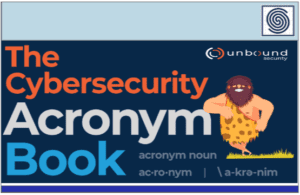Source: heimdalsecurity.com – Author: Cristian Neagu
What Is Vulnerability Prioritization?
Vulnerability prioritization is the process of identifying and ranking vulnerabilities based on the potential impact on the business, ease of exploitability, and other contextual factors.
It represents one of the key steps in the vulnerability management process, as it sets the foundation for the next steps of the process. Its goal is to ensure that vulnerabilities that represent a high risk for the organization are addressed first, while lower-risk vulnerabilities are addressed later.
The Importance of Vulnerability Prioritization
According to the Cybersecurity and Infrastructure Security Agency (CISA), a vulnerability can be exploited by threat actors, on average, within 15 days after it is discovered. Thus, it is essential to tackle the vulnerabilities as soon as possible for effective protection against cyberattacks.
Having clear guidelines on how to prioritize vulnerabilities is crucial. Without prioritization, organizations risk wasting time and resources fixing low-risk vulnerabilities while leaving high-risk ones unattended.
Vulnerability prioritization also helps your company to:
- Reduce the exploitable attack surface and minimize the risk of data breaches, service disruptions, compliance violations, etc.;
- Align your security strategy to your business goals and objectives;
- Effectively allocate your security budget;
- Build trust with remediation and service owners.
How to Prioritize Vulnerabilities?
Organizations should adopt a risk-based vulnerability management strategy that considers the severity of the vulnerability, exploitability, impact, and business context in order to properly prioritize vulnerabilities.
Step 1: Identify the Vulnerabilities in Your System
Identifying all potential vulnerabilities in your environment is the first and most crucial step in a vulnerability management approach. Identification is essential for a company to understand what threats and vulnerabilities exist. We advise automating the procedure to make things even simpler.
Step 2: Categorize and Prioritize the Vulnerabilities
Once you are done with identifying the vulnerabilities in your network, the next step is to categorize and rank them accordingly. There are a few ways in which you can do this:
- Option 1: Prioritization via CVSS Scores
The severity of a vulnerability is represented numerically (0–10) using the Common Vulnerability Scoring System (also known as CVSS Scores). Infosec teams frequently utilize CVSS scores as part of a vulnerability management program to prioritize the correction of vulnerabilities and to offer a point of comparison between vulnerabilities.
However, one of the limitations of the CVSS metrics is that it only represents the severity of a vulnerability, not considering the risks the said vulnerability poses to your environment.
- Option 2: Prioritization via CISA KEV Database
After observing that attackers do not rely only on vulnerabilities deemed to be critical, the experts from the Cybersecurity and Infrastructure Security Agency (CISA) have created a living catalog containing known exploited vulnerabilities that carry significant risk for governmental institutions and businesses as well. Commonly known as KEV, the catalog makes it readily apparent to all organizations that they should concentrate repair efforts on the subset of vulnerabilities that are already endangering their operations.
- Option 3: Prioritization Based on Business Context
Every organization has its specific set of priorities, goals, and risk tolerance levels. Thus, probably the best prioritization method to consider is the one that takes into consideration your business’s needs and objectives. It is still advisable to make use of the CVSS and KEV, but you can be more efficient in prioritizing vulnerabilities if you filter them considering your current environment. To make it easier you can focus on:
- Identifying your organization’s goals and risk tolerance;
- Assessing the importance of your organization’s assets;
- Incorporating contextual information;
- Developing an appropriate risk-based vulnerability management program.
Step 3: Tackle the Vulnerabilities
After the evaluation and prioritization stage, addressing the vulnerabilities based on risk factors and the business environment is crucial. Depending on the vulnerability, you can choose one of the two options:
- Remediation: The remediation of a vulnerability consists of taking measures to fix it by patching, closing open ports, or using a detailed process exception. When they have prioritized the risks and understood the vulnerabilities, the majority of organizations fix the flaws. Whenever possible, this is generally the best choice;
- Mitigation: In case a vulnerability cannot be remediated right away, organizations can temporarily choose to mitigate the vulnerability by reducing its likelihood of being exploited until it can finally be fully remediated.
Step 4: Report and Monitor the Vulnerabilities
Organizations must improve the efficiency and precision with which they find and fix vulnerabilities if they want to manage the risk that vulnerabilities pose. Because of this, a lot of companies frequently assess the performance of their vulnerability management program.
How Can Heimdal® Help Your Organization?
Keeping your organization protected from vulnerabilities is a full-time duty in itself. Unfortunately, many organizations still consider that handling and patching vulnerabilities manually is enough, but it can be inefficient, put a lot of stress on your IT team, and block resources for extended periods. Nevertheless to say that dealing with vulnerability management manually also has a high error rate. Opting for an automated solution seems to be the way to go nowadays, and luckily, Heimdal®’s Patch & Asset Management solution comes in handy for your organization.
With our solution, you will be able to:
- Patch Windows, Linux, macOS, Third-Party, and even proprietary apps, all in one place;
- Generate software and assets inventories;
- Easily achieve compliance with automatically generated detailed reports (GDPR, UK PSN, HIPAA, PCI-DSS, NIST);
- Automatically conduct vulnerability and risk management processes;
- Close vulnerabilities, mitigate exploits, deploy updates both globally and locally, anytime, from anywhere in the world;
- Customize your solution based to perfectly fit the needs of your organization.
Enjoy a customizable, hyper-automated tool, that you govern!
Install and Patch Software. Close Vulnerabilities. Achieve Compliance.
Heimdal® Patch & Asset Management
Remotely and automatically install Windows, Linux and 3rd party patches and manage your software inventory.
- Create policies that meet your exact needs;
- Full compliance and CVE/CVSS audit trail;
- Gain extensive vulnerability intelligence;
- And much more than we can fit in here…
If you want to keep up to date with everything we post, don’t forget to follow us on LinkedIn, Twitter, Facebook, Youtube, and Instagram for more cybersecurity news and topics.
If you liked this post, you will enjoy our newsletter.
Get cybersecurity updates you’ll actually want to read directly in your inbox.
Original Post URL: https://heimdalsecurity.com/blog/vulnerability-prioritization/
Category & Tags: Patch management,Vulnerability – Patch management,Vulnerability





















































